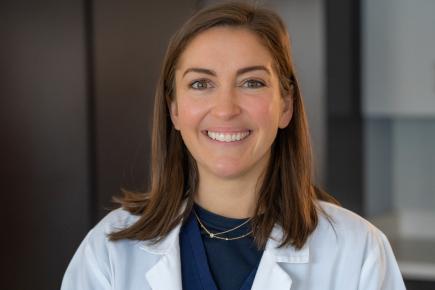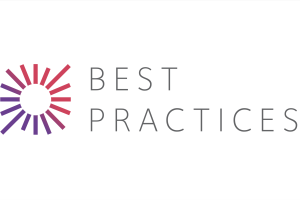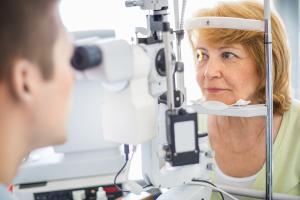Approximately 2.9 million people aged 40 years or older in the U.S. have low vision1—a disability that takes an emotional, physical, and economic toll on patients who experience it. Yet, providing vision rehabilitation services is an underserved specialty across the U.S. 2023 Best Practices Honoree Dr. Kelly Scherer, who owns and practices at The Chicago Lighthouse—shares how she got her start in low vision therapy, the everlasting impact it has made on her practice and patients, and her dedication to getting more optometrists on board.

Who inspired you to specialize in low vision?
One of my professors and mentors in optometry school specialized in low vision. He was my first true introduction into this specialty. Out of my own curiosity, I asked if I could shadow him in his own practice and that’s when I really fell in love with it—so much so that I went on to pursue a fourth-year externship and residency in low vision. Things took off from there.
How have you grown your low vision practice over the years?
Our largest referral source has been through other healthcare providers in the area, particularly ophthalmologists. But we’ve also worked quite a bit with trauma departments in nearby hospitals, as well as kidney transplant centers. There are so many different healthcare specialties that encounter vision loss, so their awareness of our low vision services has enabled our growth. We also have developed a partnership with the University of Illinois Chicago retina provider working in inherited retinal diseases (IRD) research and clinical care, which has helped to keep up with all the latest developments in this segment.
How do you differentiate your low vision practice from others?
We work under what we like to call a comprehensive interdisciplinary model. While we’re low vision specialists, we’re not solely focused on the eye care aspect of the condition because low vision affects people in many different ways. In addition to nine low vision residency trained optometrists, our staff includes three occupational therapists, a psychologist, a counselor, orientation and mobility specialists, and three assistive technology specialists. We serve patients experiencing low vision of all severities and in every stage of life. We also have an early intervention program, which is designed to ensure that infants and toddlers with visual impairment receive appropriate engagement and care for their development.
While demand is high for low vision services, there aren’t enough optometrists practicing this specialty to meet it. Why do you think that is?
I think it’s two-fold. I think some optometrists may feel as though they don’t have enough background or the right training to dive right into it, whereas I think others may simply see it as a challenge to integrate into their existing practice due to time and resource demands.
What steps are you taking to help encourage and/or mentor young optometrists and students to pursue a specialty in low vision?
We’re committed to train anywhere between 10 to 15 students per year, and host two residents annually. It’s a passion of mine to grow the low vision specialty so I’m dedicated to bringing in as many students as we can to raise awareness—and that starts with the next generation of optometrists. In addition, six of our nine optometrists currently teach at local colleges of optometry, lecturing on low vision.
What would you tell your peers about the opportunity low vision provide in terms advancing their careers?
Because there is such a high demand in the U.S. to serve low vision patients, I think there is a major opportunity for eye care professionals to expand both their practice and patient base by offering low vision services. Patients will travel far and wide to access the eye care they need, so I believe that adding these much-needed services can grow a practice fairly quickly and easily.








